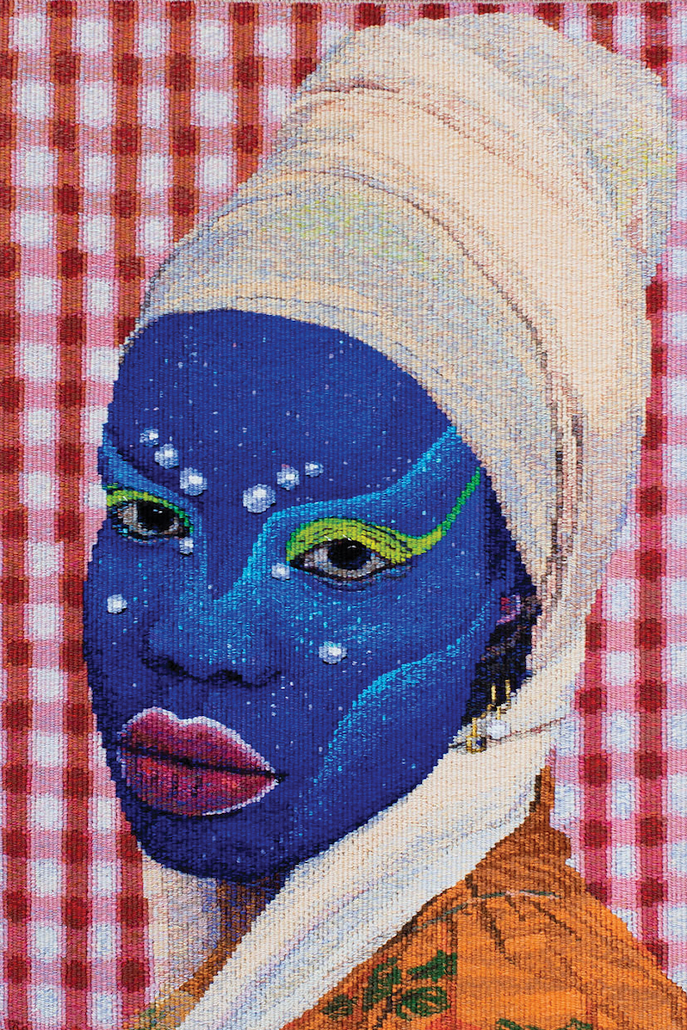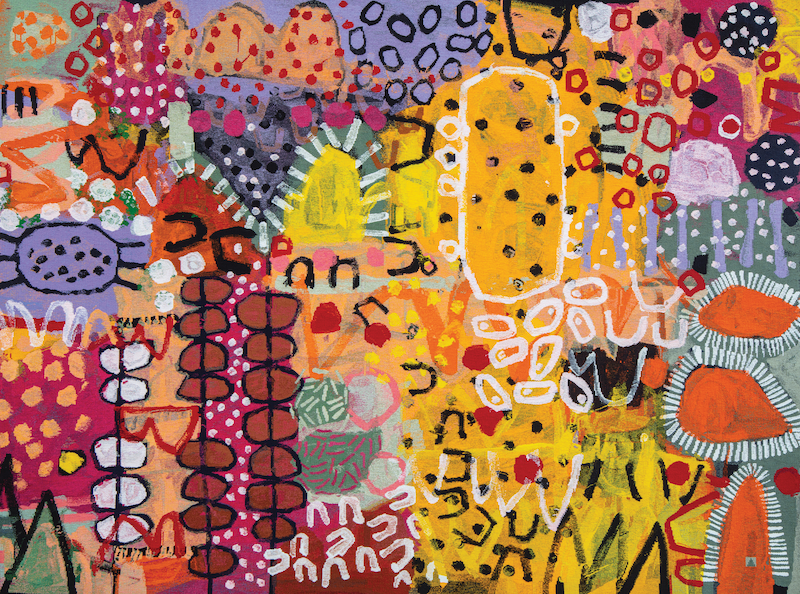For the uninitiated, what is the Australian Tapestry Workshop, and what does it do?
We are a not-for-profit arts organisation based in South Melbourne, creating one-off tapestries in collaboration with living artists. We are one of a tiny number of workshops around the world that uses the Gobelin technique in which an image is formed by tightly packing layers of weft (horizontal threads) over warps (vertical thread). We employ a cadre of highly skilled weavers, artists in their own right, to collaborate with commissioned artists to create new works that often stretch and challenge those artists’ practices.
You have an impressive and extensive career in the arts. Can you talk me through your background and how you became CEO of the Australian Tapestry Workshop (ATW)?
My career is characterised by intercultural and international exchange. I have held positions at The British Council and Australia Council for the Arts as well as at the City of Melbourne, where the goal has been to connect cultural actors through reciprocal projects that are open, curious and constructive.
ATW has long been on my radar as a high-performing Australian arts organisation doing everything right. The tapestries that are woven here are of the highest quality – beautiful, impactful and sustainably produced. The artists engaged represent a broad cross-section of Australian society, with a strong emphasis on First Nations practitioners.
What interests you in textiles and tapestry making?
Everyone, no matter what their cultural background or social standing, has a relationship with textiles – through clothing, of course, but almost always also through an intergenerational exchange, with strong personal and cultural resonance. In my case, I sat with my granny as she mended, so I am delighted to see the upsurge in visible mending and fashion recycling that is on trend.
Tapestry making is slow, and in our case, collective. The weavers sit together day in, day out, in an ensemble that my background inclines me to compare to a dance company that takes input from a changing roster of choreographers. They do this whilst honing a language of their own and, within that, an array of personal signatures that can be applied outside of the group.
ATW’s weavers are masters of their art. They are also warm and friendly people who regularly incorporate our Artists in Residence into their daily routines. I eavesdrop on the conversations and am delighted by the peer exchange and the sense that even weavers who have been with ATW for 40 years are eager to learn.
People can commission a tapestry from a particular artist/weaver. Can you talk us through this process and this unique offering?
Sometimes there is a particular public or private site in mind, sometimes an artist or an artwork, and often there is a combination of site, artist and work that leads to a commission. We love to hear from everyone interested in tapestry and count architects, interior designers, public art consultants, government, artists, weavers and textile artists, collectors, art advisors, gallerists, curators and the general public as part of our extended family. We welcome enquiries, large and small.
Are there any new technologies in tapestry and textiles that are currently driving the industry?
Tapestry was disrupted in the earliest years of the industrial revolution, with the Jacquard loom presaging the development of computers. I am in the very fortunate and increasingly rare position of feeling unthreatened by technological advances such as AI. We are not complacent, of course, and pay close attention to developments in the field of art innovation, but there is a confidence in the inherent quality and value of the work we do that enables us to feel open and engaged with new technologies rather than threatened and vulnerable.
What artists are currently working at the ATW? Are there any standout artists you can tell us more about?
The work that we are soon to finish is a design by UK artists Matthew Collings and Emma Biggs for a private home. It is a gorgeous abstract work in a palette of pastel wools that we hand dye on site. I take my hat off to the weavers who sometimes wind as many as 12 colours onto a bobbin in order to achieve the appropriate smudging or fading effects.
In regard to artists in residence, we have just farewelled the amazing Wadawurrung artist Kait James, who brought her political and activist work to us and held a workshop and displayed three pieces in our galleries. And we are soon to welcome the recipients of our annual Irene Davis scholarship for international artists, the Swedes of Studio Brieditis & Evans.
How can people get involved in the ATW? (For example, workshops, open days, buying opportunities, and so on.)
We have a lively year-round program of activities for the general public that includes talks and workshops with our Artists in Residence and artists and artisans involved in our tapestry production. We welcome visitors from overseas and around Australia and often host delegations at our South Melbourne home. We participate in festivals and events such as Open House, where we will soon host a family workshop and three tours. Our store stocks all the many colours of wools that we dye on site and is open to the public five days a week. The store also stocks publications and small tapestries for sale. And our social media and website keep audiences up to date on new activities and products.
Do you see there being a current resurgence in the craft of tapestry making? And where do you see it going in the future?
ATW runs a couple of international prizes that, to some extent, gauge the temperature of interest in tapestry each year. Each of our two prizes attracts an incredible number of applicants from around the globe, as do the applications for our six annual Artists in Residence positions. We have engaged with artists and architects from every continent and feel very connected to a lively international tapestry fandom.
For ATW the future looks bright. We have an enormous momentum that fuels our national and international engagement. Our supporters are extraordinary, and, at this point, I must stress how strong that body of donors, Friends, volunteers and funders is and how crucial they are to our success. It is hugely significant that we retain this following that grows over time and feel confident to keep adding and extending our friendships.
Above: Sophie Travers at the ATW. Photo: Marie Luise Skibbe. Courtesy: the Australian Tapestry Workshop.

Self Portrait in July (4), designed by Atong Atem and woven by Pamela Joyce using wool and cotton. Photo: Marie Luise Skibbe.

The Royal Harvest, designed by Naomi Hobson, woven by Pamela Joyce, Amy Cornall, Sue Batten, Tim Gresham and Jennifer Sharpe using wool and cotton. Photo: John Gollings AM.

Old Media designed by Emma Biggs and Matthew Collings on the loom at the ATW. Photo: Marie Luise Skibbe.

